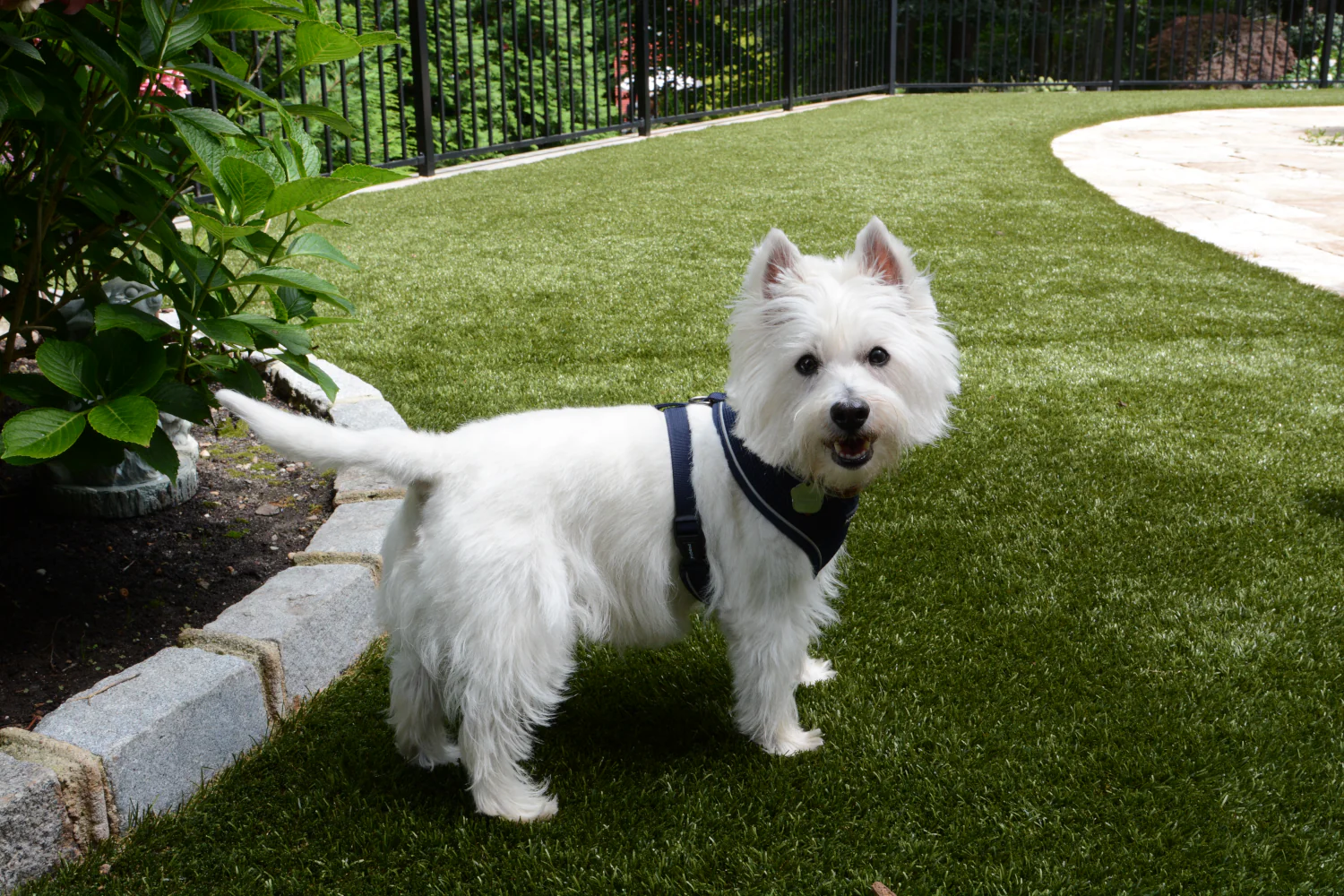How to Avoid Pet Turf Mistakes

You picked artificial grass for the low upkeep and tidy aesthetics — smart move. But pets bring new challenges. Here’s a straightforward breakdown of the frequent mistakes that happen to fake grass for dogs and exactly what to do about each one, step by step.
1. LETTING SOLID WASTE SIT
What happens: A forgotten pile hardens, spreads, or soaks into the infill.
Why it matters: Dried messes can harbor germs and leave stains.
Fast fix: Remove and throw away as soon as you can. If a mess stays, use a soft brush and a hose to lift it out.
Habit to build: Keep a small scoop and sealed trash bin near the yard for quick cleanups.
2. DOG PEE PATCHES
What happens: Dogs use the same areas and urine collects.
Why it matters: Lingering stink and yellowed infill may follow.
Fast fix: Rinse with a hose from time-to-time to prevent buildup, especially if rainfall is scarce. For stubborn smells, a pet enzyme cleaner made for artificial turf might be needed when using regular sand infill. Using specialized SWG/Shaw K9 infill stops odor completely.
Preventive move: Change where your dog plays or set toys to spread traffic around.
3. DIGGING, CHEWING, AND NAIL DAMAGE
What happens: Dogs dig holes, bite corners, or their nails get snagged on seams.
Why it matters: Holes, loose edges, and damaged fibers reduce turf lifespan and become a tripping hazard.
Fix: Trim nails regularly and fix raised seams with ground stakes or adhesive recommended by the turf maker.
Prevention: Give dogs a dedicated digging spot and provide chew toys.
4. POOR DRAINAGE AND STANDING WATER
What happens: Water pools after storms or heavy use.
Why it matters: Pooled water can encourage mold, fungus, and mildew and feel unpleasant for pets.
Fast fix: Clean out debris from drainage channels. Gently raise corners near drains to check for blockages.
When to call a pro: If the same spot puddles after many rains, the base may need regrading.
5. MATTED TURF FIBERS
What happens: Frequently used areas start to look worn out and crushed.
Why it matters: Compacted infill keeps dirt in and reduces cushioning.
Fast fix: Rake fibers upright with a soft-bristle broom.
Routine: Brush high-use areas once a month to keep the turf upright.
6. USING THE WRONG CLEANING PRODUCTS
What happens: Strong chemicals break down the backing and fibers.
Why it matters: Discoloration, loose seams, and reduced turf life.
Fast fix: Hose down spots thoroughly and use pet-safe gentler turf cleaners. A vinegar-water mix works for many odor issues.
Note: Avoid solvent-based products and wire bristles.
QUICK CARE CHECKLIST
- Remove droppings within a few hours
- Rinse frequent urine spots at least once a week
- Brush fibers in busy spots monthly
- Keep food and messy treats on a mat
- Choose pet-safe products for synthetic turf
- Investigate drainage after heavy storms
NEED A DEEP PROFESSIONAL CLEANING
Little habits keep your artificial turf for dogs clean, smelling fresh, and looking like new. If you need help — from a deep clean to checking drainage or refreshing infill — Southwest Greens can do the hard work so your yard remains pet-friendly and guest-ready. Contact us, and we’ll create a care plan for your turf.
